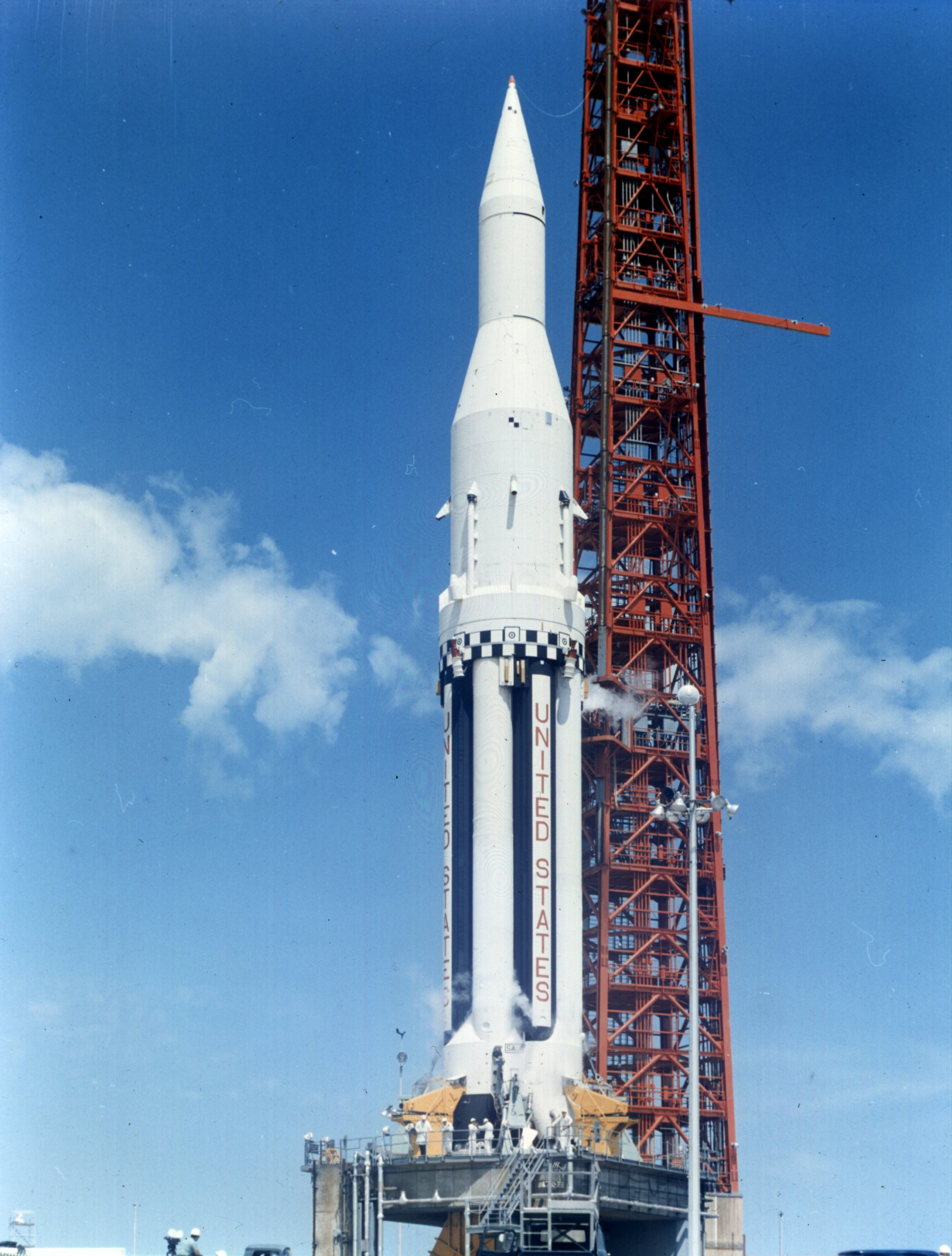
Saturn I
In-activeChrysler (CHR)
Oct. 27, 1961
Description
The Saturn I was a rocket designed as the United States' first medium lift launch vehicle for up to 20,000-pound (9,100 kg) low Earth orbit payloads.
Specifications
-
Minimum Stage
2 -
Max Stage
3 -
Length
55.0 m -
Diameter
6.6 m -
Fairing Diameter
6.6 m -
Launch Mass
510.0 T -
Thrust
6700.0 kN
Family
-
Name
Saturn I -
Family
― -
Variant
I -
Alias
― -
Full Name
Saturn I
Payload Capacity
-
Launch Cost
― -
Low Earth Orbit
9100.0 kg -
Geostationary Transfer
Orbit
― -
Direct Geostationary
― -
Sun-Synchronous Capacity
―
Chrysler
Commercial
None
CHR 1950In July 1959, NASA chose the Redstone missile as the basis for the Mercury-Redstone Launch Vehicle to be used for suborbital test flights of the Project Mercury spacecraft. Three unmanned MRLV launch attempts were made between November 1960 and March 1961, two of which were successful. The MRLV successfully launched the chimpanzee Ham, and astronauts Alan Shepard and Gus Grissom on three suborbital flights in January, May and July 1961, respectively.
Saturn I | Pegasus 3
Chrysler | United States of AmericaCape Canaveral SFS, FL, USA
July 30, 1965, 1 p.m.
Saturn I | Pegasus 2
Chrysler | United States of AmericaCape Canaveral SFS, FL, USA
May 25, 1965, 7:35 a.m.
Saturn I | Pegasus 1
Chrysler | United States of AmericaCape Canaveral SFS, FL, USA
Feb. 16, 1965, 2:37 p.m.
Saturn I | Saturn-SA 7
Chrysler | United States of AmericaCape Canaveral SFS, FL, USA
Sept. 18, 1964, 4:22 p.m.
Saturn I | Saturn-SA 6
Chrysler | United States of AmericaCape Canaveral SFS, FL, USA
May 28, 1964, 5:07 p.m.
Saturn I | Saturn SA-5
Chrysler | United States of AmericaCape Canaveral SFS, FL, USA
Jan. 29, 1964, 4:25 p.m.
Saturn I | Saturn SA-4
Chrysler | United States of AmericaCape Canaveral SFS, FL, USA
March 28, 1963, 8:11 p.m.
Saturn I | Saturn SA-3
Chrysler | United States of AmericaCape Canaveral SFS, FL, USA
Nov. 16, 1962, 5:45 p.m.
Saturn I | Saturn SA-2
Chrysler | United States of AmericaCape Canaveral SFS, FL, USA
April 25, 1962, 2 p.m.
Long March 3B/E
Fengyun-4C
Launch Complex 2 (LC-2) - Xichang Satellite Launch Center, People's Republic of ChinaChina's geostationary meteorological satellite program FY-4 (Feng Yun 4) is the second generation of chinese geostationary meteorological satellites.
Long March 8A
SatNet LEO Group 17
Commercial LC-1 - Wenchang Space Launch Site, People's Republic of ChinaA batch of 9 Low Earth Orbit communication satellites for the Chinese state owned SatNet constellation operated by the China Satellite Network Group.…
Soyuz 2.1a
Obzor-R No.1
43/4 (43R) - Plesetsk Cosmodrome, Russian FederationNote: Assignment of payloads to this launch is uncertain. The Russian Obzor-R satellite is a planned X-band radar earth observation satellite desi…
LVM-3 (GSLV Mk III)
BlueBird Block 2 #1
Satish Dhawan Space Centre Second Launch Pad - Satish Dhawan Space Centre, IndiaAST SpaceMobile’s Block 2 BlueBird satellites are designed to deliver up to 10 times the bandwidth capacity of the BlueBird Block 1 satellites, requi…
Long March 12A
Demo Flight
Long March 12A Pad - Jiuquan Satellite Launch Center, People's Republic of ChinaFirst test launch of CASC/SAST’s Long March 12A rocket, with a dummy payload. The rocket’s 1st stage attempted to land on a landing pad about 300 km …

